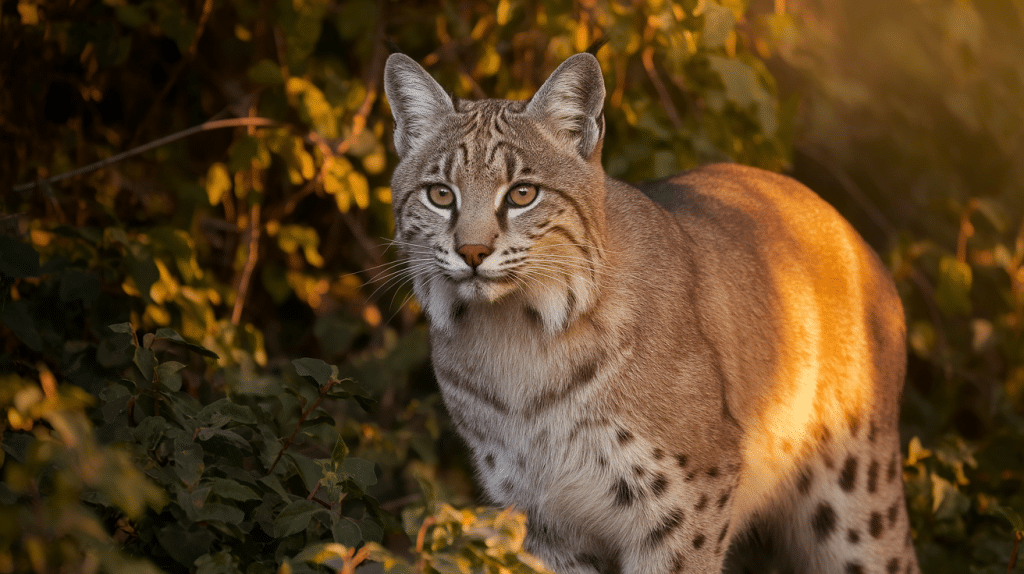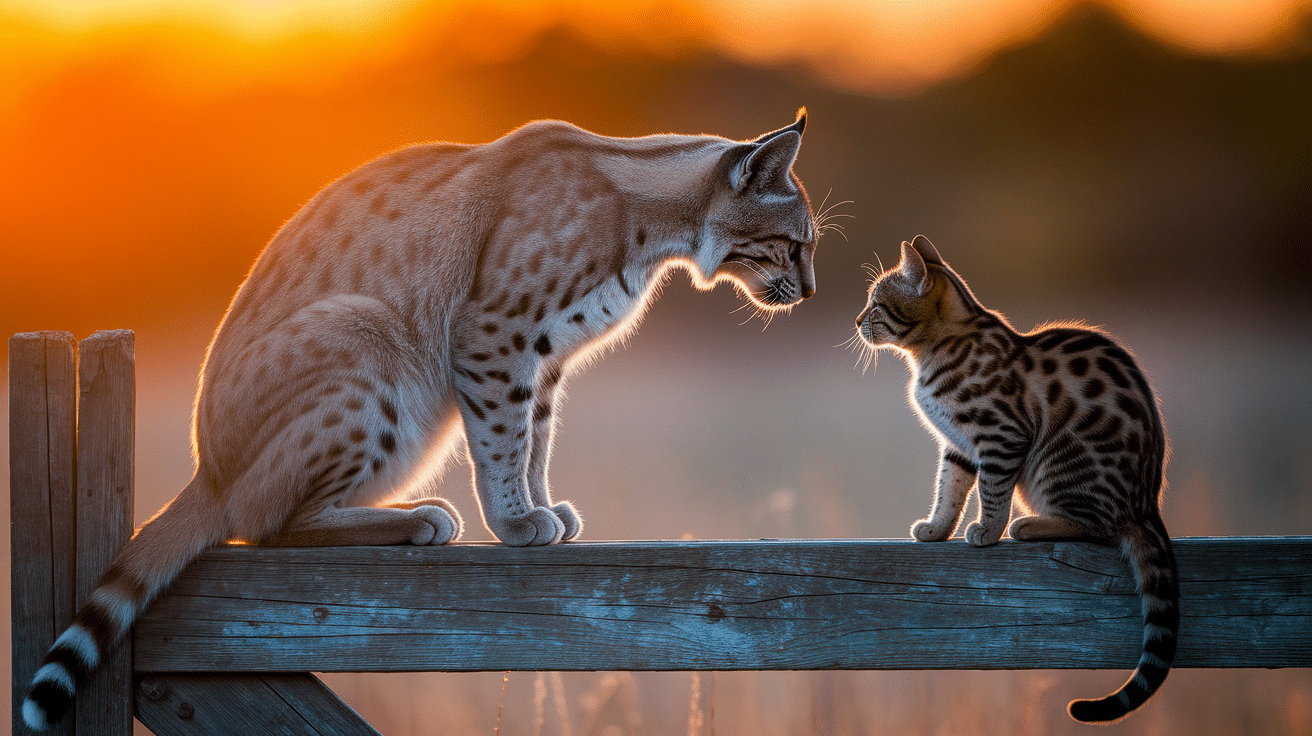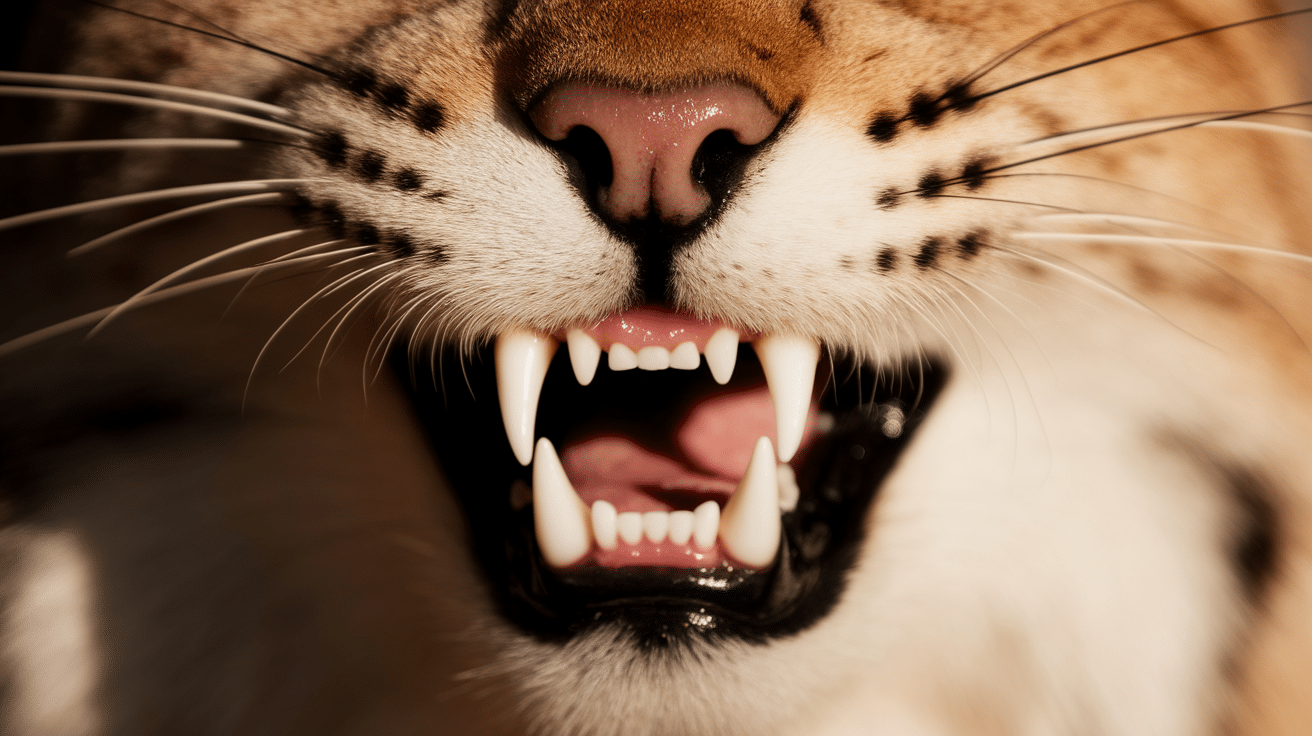Those sharp teeth in a bobcat’s mouth aren’t just for show.
Bobcats possess a surprisingly powerful bite force, making them much more formidable than their cute appearance might suggest.
These widespread predators may resemble larger versions of your house cat, but their hunting abilities might shock you.
While their stealth and agility are impressive, it’s their jaw strength that truly sets them apart as efficient hunters.
In this article, we’ll learn just how strong a bobcat’s bite really is, compare it to other animals you might know, and explain how these wildcats use their impressive dental equipment to survive in the wild.
How Powerful is a Bobcat’s Bite Force
Bobcats’ bite force is surprisingly strong, measuring around 800 pounds per square inch (PSI).
To put that into perspective, that’s much stronger than a domestic dog’s bite and powerful enough to hold onto prey like rabbits, birds, and even deer.
They have long, pointed canine teeth that grip and puncture, plus sharp carnassial teeth that slice through meat like scissors.
This combination enables bobcats to deliver a quick, deadly bite, which helps them take down prey efficiently despite their medium size.
Types of Bobcat Teeth
- Canine Teeth: Long, sharp teeth used for grabbing and holding prey.
- Incisors: Small teeth for nibbling, grooming, and picking meat off bones.
- Carnassial Teeth: Scissor-like teeth for slicing meat and crushing bones.
- Molars: Flatter teeth for grinding food, making it easier to digest.
Bite Force of Bobcat vs. Other Wild Cats
Bobcats have a bite force of approximately 548 newtons (N), which is quite strong for their size, helping them take down prey larger than themselves.
| ANIMAL | BITE FORCE |
|---|---|
| Panthers | 1311 N |
| Mountain Lions | 1311 N |
| Lynxes | 1780 N |
Factors Affecting Bobcat Bite Strength
Below are some common factors that really affect the bobcat bite strength:
- Age matters: Young bobcats have significantly weaker bites than adults, with full bite strength typically developing around 2 years of age, when their skull and jaw muscles have fully matured.
- Size and sex differences: Male bobcats generally have stronger bites than females due to their larger overall size and muscle mass.
- Dietary adaptations: Bobcats in regions with larger prey tend to develop stronger bite forces than those in areas with primarily small rodents and birds.
- Jaw muscle development: Regular hunting and feeding on tough prey create more developed temporalis and masseter muscles, directly increasing bite strength.
- Seasonal variations: During winter months, when prey is scarce, bobcats must be more efficient hunters, often developing stronger bites to ensure successful kills.
- Health and nutrition: Well-nourished bobcats maintain proper bone density and muscle mass essential for powerful bites, while malnourished individuals show reduced strength.
- Dental health: Tooth damage or loss significantly reduces bite effectiveness, which is why bobcats with all teeth intact demonstrate superior hunting success rates.
Are Bobcat Bites Dangerous to Humans
Yes, bobcat bites can indeed be dangerous to humans, though such incidents are extremely rare.
These wild felines typically avoid human contact whenever possible, preferring to slip away quietly rather than confront people.
If a bobcat does bite someone, the primary concerns are infection and disease transmission. Their powerful jaws can cause puncture wounds that potentially introduce bacteria deep into tissues.
Like other wild animals, bobcats can carry rabies, though actual transmission cases are uncommon.
Conclusion
From their specialized teeth to their impressive jaw strength, bobcats truly are nature’s perfect little hunters.
These amazing wildcats have developed just the right amount of power to thrive in their woodland homes across North America.
What’s truly interesting is how these beautiful creatures use their powerful bite solely for survival, rather than causing harm.
Next time you’re lucky enough to spot one of these felines, take a moment to appreciate the incredible natural engineering.
Frequently Asked Questions
Can a Bobcat’s Bite Crush Bones?
Yes, with their strong bite force and sharp teeth, bobcats can puncture and crush bones, which helps them consume larger prey like deer.
Do Bobcats Use Their Claws Along with Their Bite?
Yes, bobcats have retractable, sharp claws that help them grab and hold prey while delivering a powerful bite.
How Quickly Do Bobcats Develop Their Teeth?
Baby bobcats start growing milk teeth after about one month. Permanent teeth replace these by around 20 weeks, and they are fully developed by their first year.






















